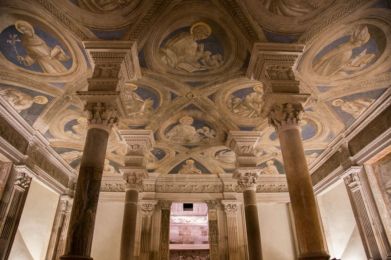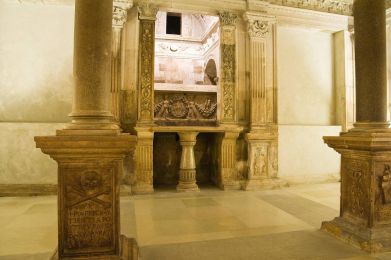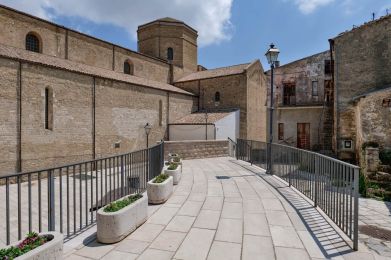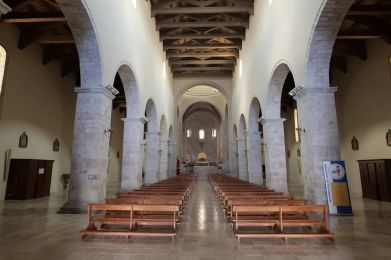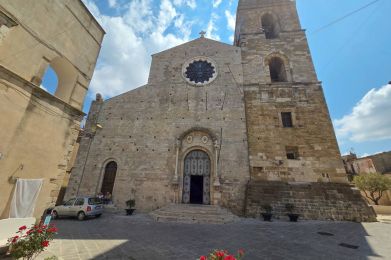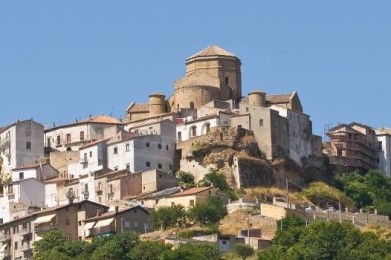The Cathedral of St. Mary of the Assumption and St. Canio, Acerenza’s majestic cathedral, stands on a site that has been a sacred place since ancient times: here stood a Roman temple dedicated to Hercules Acheruntinus and, later, an early Christian church. The present building was started at the end of the 11th century at the behest of the Norman archbishop Arnaldo of Saint Evroul, a trusted man of Robert Guiscard, and completed in the first decades of the 12th century thanks to French workers provided by the Normans.
The layout, in Romanesque style with transalpine influences, features a Latin cross plan and an imposing facade punctuated by a large rose window and a portal adorned with symbolic sculptures. Originally flanked by two bell towers, it lost much of its structure in the earthquake of 1456: only one of the towers was rebuilt in 1555, and it still houses reused Roman relics.
The large interior (69 meters long by 23 meters wide) has three naves supported by massive pillars. The raised chancel opens onto the choir with ambulatory and radial chapels, a rare scheme in the Italian Romanesque scene that Acerenza shares only with Aversa and Venosa. The cross vaults, octagonal dome and play of pointed arches give the environment a unique suggestion. Works from different periods are kept here: medieval frescoes, 18th-century statues, a Renaissance polyptych and, above all, the simulacrum and relic of the staff of St. Canio, patron saint of the town.
The real jewel is the Ferrillo Crypt, commissioned in 1524 by the Ferrillo-Balsa counts. Inspired by the Chapel of the Succorpo di San Gennaro in Naples, it features decorated columns, Renaissance bas-reliefs and frescoes by Giovanni Todisco da Abriola depicting Apostles, Evangelists and sacred scenes. The crypt also contains the tomb of the Ferrillo family, while a Renaissance pictorial cycle, enriched with classical motifs and allegorical figures, contributes to the enigmatic charm of the place.
There is no shortage of legends and mysteries: the relic of St. Canio’s staff that allegedly moved inexplicably, the prodigy of the “holy manna” oozing from the patron’s sarcophagus, and even the suggestive hypothesis that Maria Balsa, a descendant of the lineage of Vlad III the Impaler, the “Dracula” of history, is buried right here.
Today the Cathedral of Acerenza, nicknamed the “cathedral of mysteries,” is considered one of the most significant examples of Romanesque architecture in southern Italy and remains an extraordinary monument that interweaves faith, art and legend.

